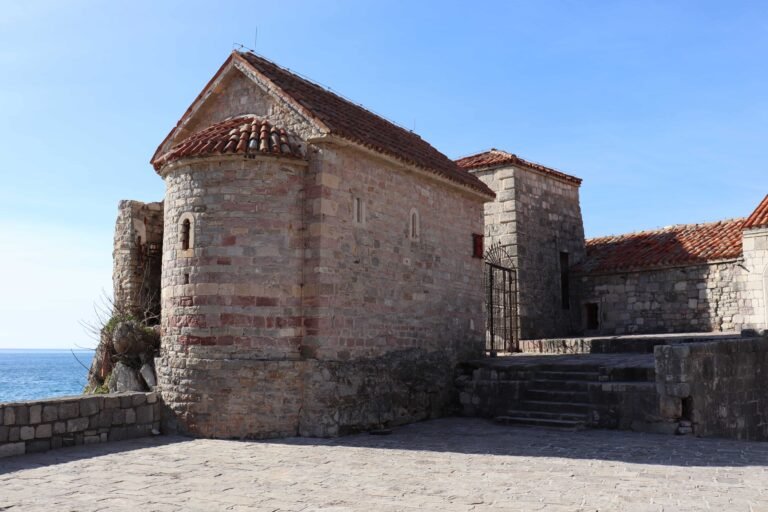Glavna ulazna vrata nalazila su se desetak metara sjevernije od sadašnjih, a ispred njih je postojala polukružna zaštita u vidu niske kule gde se ostavljalo oružje prije ulaska u grad. Kulu su srušili Austrijanci 1867. i formirali novi ulaz u grad. Iznad ulaznih vrata sa unutrašnje strane ka gradu je zadržan običaj ostavljanja oružja, pa je formiran novi objekat – oružarnica, o čemu govore materijalni ostaci. U niši je mozaička ikona sa predstavom Bogorodice, zaštitnice grada, pored koje se svaku noć palilo kandilo. Sa spoljne strane iznad vrata, između nadvratne grede i luka za rasterećenje, uzidana su dva grba od kojih je niži srednjovjekovni grb grada Budve sa štitom i tri osmokrake zvezdice. U vrhu bedema iznad vrata je i vojna osmatračnica sa koje se čuvao ulaz u grad, a ispod nje reljef, simbol mletačke vlasti u vidu krilatog lava.

7. Crkva Svetog Save Osvećenog, XII vijek
Crkva svetog Save Osvećenog jedan je od najstarijih hrišćanskih sakralnih objekata na teritoriji Starog grada Budve, locirana na istaknutom budvanskom grebenu, zapadno od




